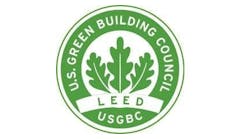The roofing industry has utilized powerful tools for inspecting and repairing roof systems. These tools are tailored to the nature of each roof type, so it’s vital to make sure your toolbox is filled with the right resources.
If you have a good understanding of the components of your roof system, one way to get started is by looking at roofing materials.
Match Roof Materials to Tools
Do you havebituminous membranes superimposed over rigid thermal insulations? Cellulosic insulations absorb moisture that results in hot spots that can be detected by infrared cameras. During the day, the insulation absorbs heat from the sun, but after dark this heat is slow to release this heat back to the sky, so "warm spots" appear as wet.
Polymer-modified bituminous systems are much the same as BUR and may also be applied using hot asphalt. They may also use cover boards, which may be slower to absorb water. In addition to infrared detectors, nuclear meters and capacitance meters can be used. They have the advantage of being useful during daylight, and provide numbers that provide contour maps of suspected wet spots.
Single-ply polymeric membranes including PVC, TPO, Hypalon, CPE, and EPDM are frequently installed over cellular foam insulations such as polystyrene and polyurethane. They are very slow to absorb water, and you may first detect water at the joints between adjacent roof boards.
To interpret your inspection results properly, you'll also need to know what type of thermal insulation you have. Your roof may include:
- Fiberboard: Turns to mush if soaked over time.
- Glass fiber, mineral fiber or perlite boards: Hold up better than fiberboard, but can still disintegrate due to cyclic wetting and drying. Infrared detectors show wet boards as hot spots.
- Polystyrene boards, both molded boards (EPS) and extruded (XPS): These are more resistant to water attacks. XPS in particular is suitable for long-term cyclic action, such as that found in protected roof membrane assemblies (PMRs).
- Polyurethane and polyisocyanurate boards: Generally faced and may be attacked at the edges of the insulation boards. This will show up during inspection as a "picture frame" shape. You may discover the facers delaminating over time.
Appropriate roof decks for moisture surveys include steel, structural and lightweight insulating concrete. Sources of moisture attack may originate from the original pouring of the concrete or from cyclic wetting and drying. Insertion of roof vents has not showed drying over time. Wood, plywood, and OSB are all subject to rotting over time, and are generally restricted to roofs of adequate slope to shed intruded water.
Surfacings, both solvent-based and water-based, may also be visible to a roof inspector. Standing water may cause delamination of coating and require vigorous brushing, followed by priming. Ballast may migrate due to wind scour. Walkway materials may be used in heavily trafficked areas.
Richard (Dick) L. Fricklas, received a Lifetime Achievement Award and fellowship from RCI in 2014 in recognition of his contributions to educating three generations of roofing professionals. A researcher, author, journalist, and educator, Fricklas retired as technical director emeritus of the Roofing Industry Educational Institute in 1996. He is co-author of The Manual of Low Slope Roofing Systems (now in its fourth edition) and taught roofing seminars at the University of Wisconsin, in addition to helping develop RCI curricula. His honors include the Outstanding Educator Award from RCI, William C. Cullen Award and Walter C. Voss Award from ASTM, the J. A. Piper Award from NRCA, and the James Q. McCawley Award from the MRCA. Dick holds honorary memberships in both ASTM and RCI Inc.
Types of Tools
Depending on your roof type, you may decide to utilize any of these to detect unwanted moisture inside your roof.
Infrared cameras note thermal anomalies due to the absorption and release of heat. Areas with moisture release heat at a different rate than dry areas. Infrared detectors no longer require liquid nitrogen and are far more sensitive than devices from a decade or so ago.
Wheeled capacitor devices are efficient in detecting moisture beneath the roof membranes, although carbon-black reinforced EPDM acts as a "short circuit."
Electronic Leak Detection directs current to active leaks rather than wet insulation. The ELD devices direct current flow and point by vector to gaps in the membrane system. The membrane has to be damp so that current flows through smallest of holes and directs the operator to the highest current. ELD tools are useful for IRMA configurations as well as ballasted or green roofs.
Hand-held devices use probes that penetrate the membrane. These can be used in evaluating damp boards such as gypsum wall board or cover boards.
Nuclear meters measure concentration of hydrogen atoms (H20). These are useful for taking readings in crowded areas and laying out a grid. Results should be verified by a secondary test device.
Capacitance meters rely on the ability of a body to store an electrical charge. A common form of energy storage device is a parallel-plate capacitor that measures dielectric properties.
In addition to these devices, which are based on physical properties of the roof (such as electrical conductivity), inspection techniques for low slope roofing typically also includes a mix of visual inspection and sampling. Roof cuts and core samples can reveal defects that require patching, while the visual end of your inspection should include looking for ceiling stains and interviewing building occupants about common signs of roof leaks.
Use a digital camera during your inspection and keep records of what you find; over time, you can compare photos to look for changes. Keep these photos and all inspection results together in an organized roofing file, along with any relevant warranty documentation, labels from roofing products, roof access records, and any other documents that can help you manage your roof throughout its lifecycle.
All of these variables and tools need to be matched to the particular project under consideration. If the roofing file is available and up to date, surveys may be smooth and satisfactory.
The Hole Story
Why do roofs fail early?
Maximize Roof Service Life
Raise the ceiling on your roof's value.
5 Easy Ways to Avoid Roof Damage
These simple solutions can help minimize roof trouble.


